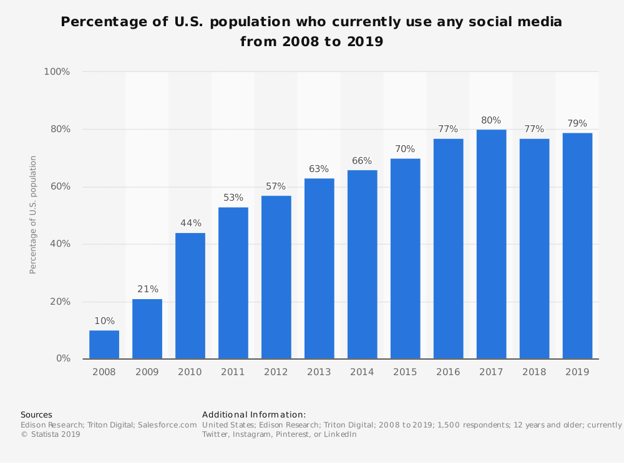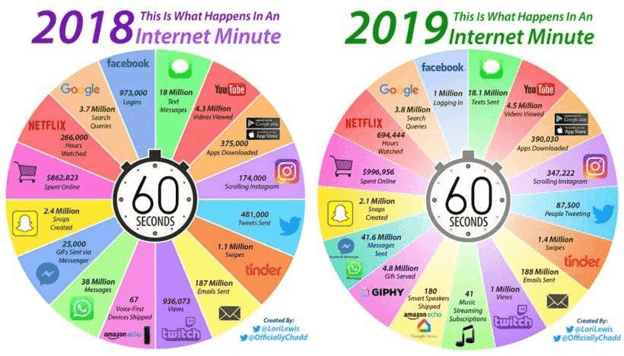Editor’s Note: This post is republished with permission from Trust Insights, a company that helps marketers solve/achieve issues with collecting data and measuring their digital marketing efforts.
As a marketer, your sole focus should be how to reach your audience. In the digital space, the way that you can reach people is constantly evolving.
Your marketing plans involve methods to engage with people on different platforms, build brand awareness, and understand behaviors that lead to purchases. Depending on your products and services, who you’re selling to and where you find your audience will change. The two segments that marketers consider are B2B and B2C. B2B, or “business to business” means that you are marketing and selling your services to another company, whereas B2C or “business to consumer” means that you are marketing and selling directly to the end user, typically one individual.
However, there is a third segment that needs to be considered to reach the right audience, B2M. In digital marketing, you need to consider the Business to Machine segment. No, the machine isn’t the decision maker or the end user, but the machine is the gatekeeper that will prevent you from reaching your audience. As AI gets smarter, the algorithms that each platform contains gets more complex and are harder to get through. Some algorithms are powered by more engagement, some by the right combination of words, others are pay to play. It’s like trying to untangle a knot that keeps retying itself.
Each of the main areas of marketing has some kind of machine that you need to market to before your audience becomes aware of your content:
Search
When someone plugs a set of keywords into a search engine, they are looking for information about that particular topic. The goal is to have your content served up in the results. Search is more than just picking out a keyword and highlighting it in your blog post. Your content needs to also have the correct structure, length, format, images, links, etc. Google, for example, changes how its algorithm serves up content a few times a year. Your content is competing against billions of other pieces of content, so understanding how the algorithm returns content and having a plan for SEO is critical.
Email Marketing
With email marketing, your goal is to reach the top of someone’s inbox and have a subject line that makes them want to open your content. Before your audience even sees your email, you need to make sure that your content won’t get lost in the void of spam filters. Billions of emails are sent every day, and almost half of those emails are considered spam by the machines. As people are receiving more and more junk email, spam filters are getting savvier to block anything that seems even slightly malicious or dangerous.
Social Media
Social media is a beast unto itself with multiple platforms, millions of users in the United States and billions worldwide. The algorithms that power these platforms behave a lot like a search engine and change more frequently. Depending on where social media falls in your customer journey you might be using it for brand awareness or for conversions. Each tactic will be approached differently, and all are dependent on getting through the tangle of rules that the algorithm puts in place. You can publish 10 posts a day on Facebook, and your audience only sees 1 of those posts. Some social platforms don’t show content chronologically, it’s shown by how much engagement it’s received. Snapchat, for instance, has a short shelf life and the content is on a timer.

Paid Advertising
With paid ads, your goal is to reach your audience without breaking the bank. There are companies that throw millions of dollars into digital ads on a regular basis, but don’t get great results. Spending money doesn’t necessarily mean you are guaranteed impressions, engagement, or clicks. You’re competing with other companies that want to reach the same audience with their ads. Within Google AdWords for example, your ads are shown according to how good your quality score is. The quality score is an estimate of how relevant your ads, keywords, and landing pages are to a person who sees your ad. A higher quality score typically leads to lower costs and better ad positions. You also need to consider how specific your targeting is, whether it’s keyword or interest-based, or if you’re able to do retargeting on people who have previously visited your content. With everyone jockeying for the same attention, machines are actively creating a bidding war between companies for ad space, driving costs up and diminishing results.
BE AGILE

Long, long gone are the days of posting a blog or an article and being confident that it will be seen. There is too much content being produced on a daily basis for humans to be able to manually sort through and serve up. That’s why algorithms exist, to take the burden off of the person and churn through the results automatically. That said, you the marketer need to be as smart, if not smarter, than the machines. Using tools, such as a predictive forecast will help you stay ahead and make sure you have the right content at the right time. You also need to do your research and see how the algorithms in your chosen platforms are working and if there have been any major changes to how they actively block you from reaching your audience. Adopting methods, such as agile marketing, will allow you to stay nimble and pivot your plan as you discover what is and isn’t reaching your audience. If you’re not marketing to the machine first and your target audience second, you’re not going to get the results you so desire.
Katie Robbert
Katie Robbert is CEO and cofounder at Trust Insights.


.jpg)